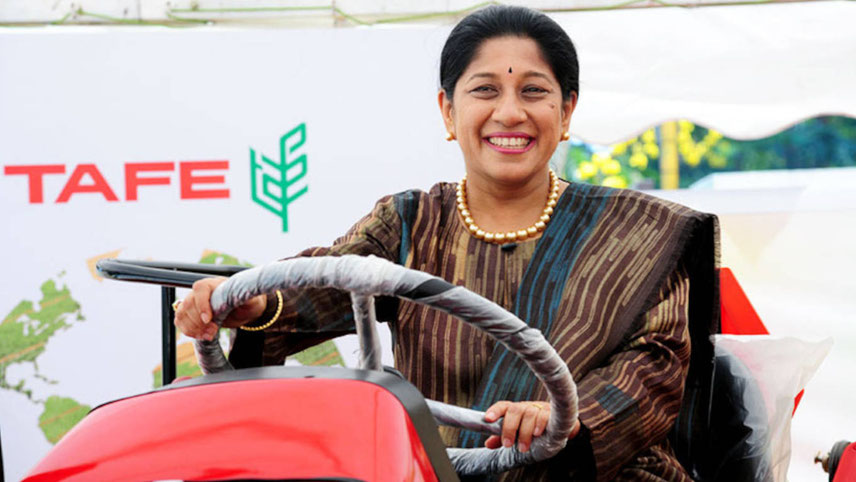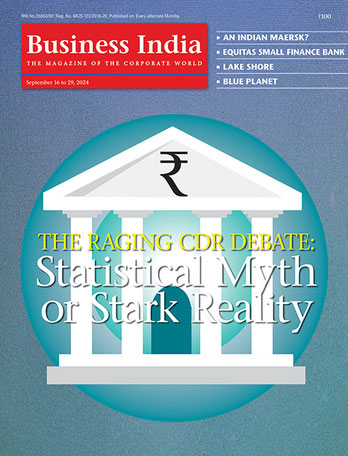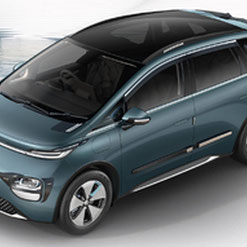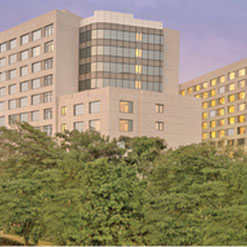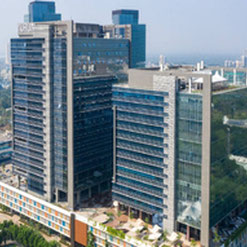-
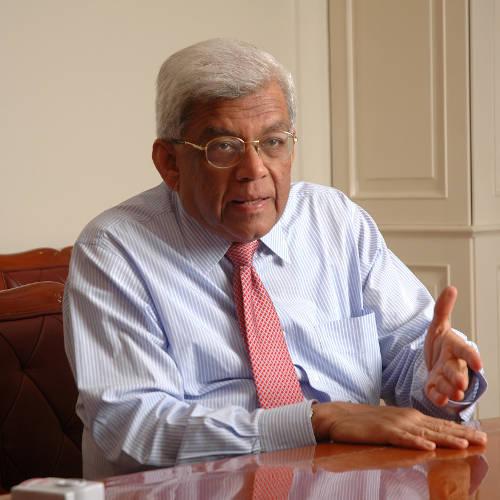
Parekh: she was the natural choice; Photo: Sanjay Borade
Better potential
If the market cap is to be used as a benchmark for comparison, HDFC Life is by far the biggest amongst the private insurers. HDFC has a market cap of Rs1.45 lakh crore (as on 2 March 2020), as against SBI Life’s Rs87,838 crore and ICICI Prudential Life’s Rs68,645 crore. Max Insurance, which is housed in Max Financial, is at No. 4 position with a little under Rs31,000 crore.
The first three companies were listed within the span of one year – between November 2016 and November 2017. ICICI Prudential Life shares, currently priced at Rs478, were issued initially at Rs334. Likewise, SBI Life shares, which are trading at Rs878 now, were priced at Rs700. All three companies have impeccable credentials and a strong pedigree. HDFC Life trails SBI Life in terms of size; however, investors see better potential in HDFC Life.
Without taking away any credit from the management and its leaders – earlier Chaudhary and now Padalkar, “HDFC has a huge brand benefit, with the umbrella brand providing a natural trust element”, says Ajay Bagga, a veteran in the financial sector, having worked with several companies in leadership roles. “HDFC Life has a diversified product mix, with both savings and protection options, as also strong distribution capabilities, with clear leadership in the online channel.”
Given the strong brand of a professional, system-led company, the leadership role at the top could be expected to be smooth, without excitement. But the truth was otherwise. “When I joined in 2008, we were ranked at number six, in market share. Today, we are number two in the private sector. So, this journey and the trajectory of improving, when everyone else is equally competitive and maybe not as equative in the bottom line, is far from static,” counters Padalkar. “We have our own pressures. The kind of trajectory we have seen did require a lot of heavy lifting. We are furiously pedalling beneath the waters, although it might look calm on the top. Our DNA does not allow us to be complacent.” A good leader is only as good as his/her team. Padalkar has also on-boarded new members into the team.
The first challenge for the group was to decrease the dependence on Unit Linked Insurance Plans, which were in vogue ever since private companies were permitted to enter life insurance. Earlier, UTI did have ULIP as a product but LIC, the big dad of all insurers, with a head start of nearly 50 years before the new ones came, is focussed on traditional risk and participating policies. The ULIPs of HDFC Life, which formed 56 per cent of the total product mix in 2017-18 has gradually been brought down. From 55 per cent of its product-mix in 2018-19 and 28 per cent in 2019-20, it has now come down to just 23 per cent during the nine months ended December 2021. Participating and non-participating policies account for 35 per cent and 30 per cent respectively, with term insurance accounting for 7 per cent. Annuity products account for five per cent. This is, in fact, the fastest-growing product.
-
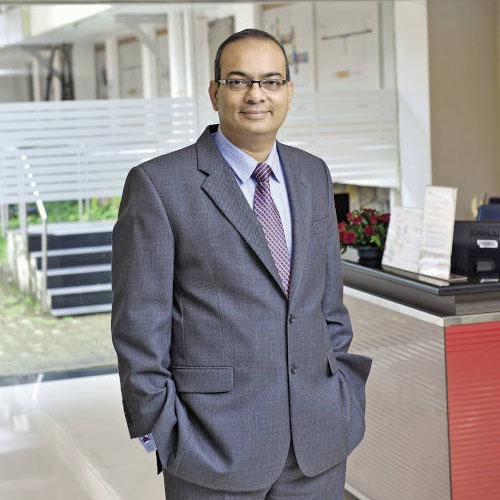
Murugesh: she did a good job at WNS; Photo: Sanjay Borade
Getting the right product mix is one key essential, while having a good distribution system is equally important. “We have chosen to have a diversified product mix, as also a diversified distribution mix,” says Suresh Badami, executive director, HDFC Life, with 26 years’ experience in sales and marketing (including 17 years in the financial sector). He had earlier worked in Dunlop, ICI and ICICI Bank. After getting his degree in science from Bangalore, he had done his PGDM from Xavier’s Institute, Bhubaneswar. “Everyone builds his own highway,” says Badami. “And we chose to be on everyone’s highway,” – referring to having an open architecture and alliances with several banks and not just one.
HDFC Bank does, however, account for a significant portion of bank assurance. HDFC has 250 traditional partners and brokers, besides focussing on building a good agency system. They now focus on forging partnerships with non-traditional partners like Maruti, Airtel, Paytm and the like. “Our focus is on selling relevant products to meet the specific need of a consumer at a particular time. The right sale helps in improving persistency levels.”
“The orientation is not to meet targets but to see customers get the most suitable products,” says Pankaj Gupta, chief marketing officer and Senior EVP (sales), who joined HDFC Life in November 2014. An IITian from Kanpur, Gupta had done his MBA from IIM, Lucknow. “Forging virtual relationships has helped to onboard customers even during Covid times,” he says, emphasising the need for simple and easy-to-understand products. Introducing a lower-ticket-sized product in a meaningful manner helps in increasing awareness.
Getting digitised
HDFC Life has been investing in technology over the last few years – in front-end sales, through internet, mobiles and bots and in machine learning in the backend from data collection and embedding the same for further analysis. “Integration with the core insurance system allows us to do a deep level of tech integration,” says Padalkar. “It has also helped us during Covid times,” adds Parvez Mulla, chief operating officer, who joined HDFC life in 2018. “About 99 per cent of customers coming during the digital journey in the Covid period were on-boarded digitally. This was through video discussions, doing KYC digitally. We also used tele-medical services and video connectivity.” Not only new customers but servicing too was done through WhatsApp, bots and videos, he adds.
The use of technology has helped HDFC Life post better growth during the three quarters ended December 2020. As against the degrowth of 6 per cent in the private sector, and 8 per cent degrowth in the insurance industry, HDFC Life has shown a positive growth of eight per cent. In absolute value terms, it is behind SBI Life in the first-year premium but in single premium policies it has received the highest premiums. The PAT for the nine-month period ended December 2020 was Rs1,042 crore, as against Rs1,064 crore for the corresponding period ended December 2019.
For 2019-20, it was Rs1,300 crore. One of the reasons for the marginally lower reported profit in December 2020 could be the reserves kept to meet higher claims arising during and after the Covid period. Of course, PAT or P/E or even book value is not the right measure for evaluating life insurance companies. All insurance companies have been mandated to write off all commissions and expenses incurred on the cost of acquisition of a new customer/policy upfront, though the benefits will be spread over a longer period of one, two or even three decades. As a result, profits tend to get suppressed in the early years.
-
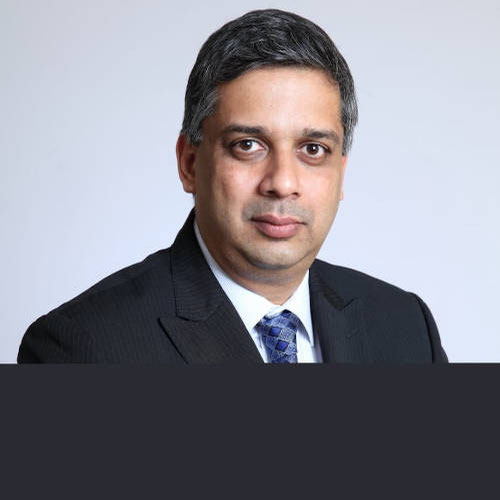
Badami: selling relevant products
Pricing and assignments
“Insurance products pricing is a complex affair,” says Srinivasan Parthasarathy, Chief Actuary, and also the officially appointed Actuary. Parthasarathy joined HDFC Life in 2011. After getting a degree in mathematics, he had also passed the difficult actuarial exams. A fellow of the Institute of Actuaries, India and UK, he had served in LIC (like most actuaries before 2000), Aviva Life (the UK and India) and Watson Wyatt UK, before HDFC.
He explains that the complexities of pricing involve making many futuristic assumptions about the economy’s GDP growth, interest rate movement and mortality rates over several decades, amongst others. Parthasarathy, who is also in charge of products, says pricing also has to take into account the tenure of the product – of two, three or even four decades or even longer tenure products, as in the case of pricing annuities and pension products, whole life, participatory and non-participatory.
“Asset-liability matches have also to be worked out. This really makes all the difference between a good insurer and non-insurer. Speaking on assignment of policies and tradability, he says that there is a regulatory hurdle. He agrees that: “A case can be made out for increasing surrender value by policy holders. HDFC Life’s surrender value for a policy in vogue for six years may be as high as 80 per cent and for, an eight-year policy, it is nearly 100 per cent.”
In some cases, there are genuine problems which prevent one from paying premium and, in such cases, assignments could be considered. Regulators may probably have, in the past, been concerned about assignment under duress. But there is a need to re-examine policies written in the past.
The pricing of policies is as difficult to explain, as is the share price enjoyed by an insurance company. Insurance companies are generally regarded as a defensive stock, providing steady returns. Different companies are priced according to the product mix of policies sold. Companies with traditional policies are priced differently, as the float enjoyed by the company is higher and, for a longer period, compared to the operational income. Participating and non-participation shares will accordingly make a difference. As of now, there are just five listed companies.
Bajaj Finserv has both life and general insurance and also has a large NBFC, Bajaj Finance, sitting on its books. Its market cap is Rs1.61 lakh crore. “In the future, I expect more and more companies to seek listing. The future for insurance is indeed bright,” says Niraj Shah, CFO, who heads finance, audit, risk management and investors’ relations. He joined the company in February 2019. India has the highest protection gap amongst major Asian companies, at 84 per cent, implying that the scope for growth is huge. The number of lives covered by HDFC Life was over 6 crore as on 31 March 2020. Shah explains that “besides listing, consolidation could also happen, going ahead”. (See box: Consolidation inevitable).
“Entry barriers in the insurance industry are quite high,” says Raamdeo Agrawal, co-founder, Motilal Oswal Financial Services, and one of the savviest investors. “Besides capital, there is no guarantee that companies, which have to invest huge sums up front during the initial years, including that for building their brands, will be able to recover those sums and generate good profits. This could spur consolidation in the industry in the future.” Being a relatively asset light model RoE can be as high as 25-30 per cent, he says.
-
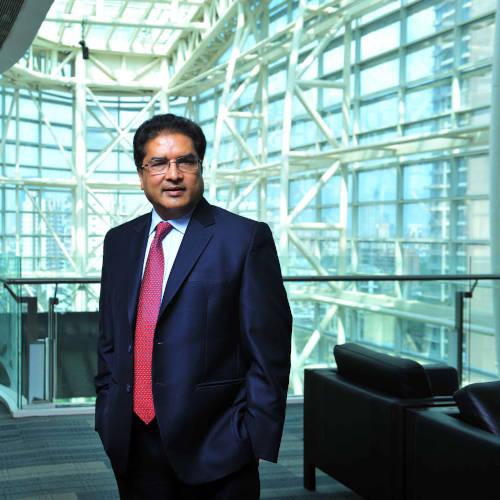
Agrawal: entry barriers are quite high
This is one reason for investors to select good brands in this sector for investments. One does not know if ICICI, SBI or HDFC Life will be able to come close to LIC, the undisputed leader by far, over the next 30, 40 or 50 years. Once LIC gets listed and is allowed sufficient autonomy in taking investment decisions, it will continue to retain the pole position in the market with good margins. Like Maruti, while it will cede some business, the majority market share will still be retained.
Of the nearly two dozen companies, how many will survive or play a meaningful role in the decades to come is not known. But going by the fact that the top 10 already have 80 per cent market share in insurance, one could see marginal companies exiting either through M&A or IPOs.
In India, insurance penetration levels are also low. The protection gap between the insured and the total population is quite high, at 83 per cent. Among other Asian countries, Japan has a protection gap of 61 per cent, Hong Kong has the least protection gap at 41 per cent, while Australia has 54. Given the rise in income, most insurers are betting that growth in double digits may well continue for several years at a stretch.
As a rule of thumb, the growth in insurance should be at least 1.5 times the nominal growth in GDP. If India’s GDP grows at a nominal rate of 12 per cent, an 18 per cent growth is possible for insurance, say analysts. For outliers like HDFC, it could be even higher.
Padalkar and her team, backed by her management, may be a witness to several changes in the industry – and make several catalytic moves itself. With a second and a possible third innings still to be played, she may well ensure that HDFC is a beneficiary and a change-maker in the industry. Whether no: 1 or not does not matter, as long as the focus on profitability takes precedence over gaining market share. HDFC has followed this strategy in its AMC business and, life insurance being much bigger, it is bound to do so here too. As long as the industry grows, outliers like HDFC Life will continue to make waves.
-
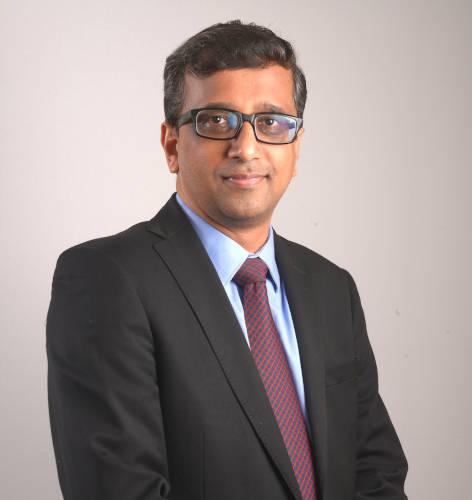
Complexities galore
Valuation of life insurance companies is a tricky business
Traditional modes of valuing companies like price to earnings and price to book value do not apply to Indian insurance companies. Of the top four listed companies, SBI Life has a p/e of 62 and a PB of 10.7x, while HDFC Life has a p/e of 108 and a PB of 18.6x. Likewise, ICICI Prudential Life and Max Financial, too, have a high p/e and PB.
One of the reasons for this is the accounting mode. IRDAI prescribes that all costs of consumer acquisition, including commissions paid to agents, banks and others, should be written off in the very year the expenses are incurred. While the benefits of the premiums, especially in protecting policies, will be enjoyed for several years to come, upfront costs will have to be debited to the P&L account in one year. As a result, whenever an insurer writes off more business, his profits in the P&L accounts will lower his profit though his earnings over the longer term will still be present.
“Valuing insurance companies requires a detailed review of the new business premium, and the renewal premium has also to be considered,” says Raamdeo Agrawal, co-founder, Motilal Oswal Financial Services. Agrawal is of the opinion that one also has to take account of the growth in the sector and the growth posted by each company. If the company is growing at 25 per cent and the real p/e, after spreading commission costs is 40, insurance companies in one’s portfolio can give steady returns. Technology and direct selling are also instrumental in bringing down the cost of customer acquisitions, he adds.
Embedded value is used to evaluate the company’s worth. HDFC had an embedded value of Rs25,050 crore as on 31 December. So, some say even at 4x the present valuation, Rs1.45 lakh crore is overpriced. However, the counter-opinion is that, taking into account the year-on-year growth in market share and the total assets under management, the company is reasonably priced. The total AUM of HDFC Life is Rs16.56 lakh and it has a solvency ratio of 202 per cent.
HDFC had tried to take over Max Life but the deal fizzled. Nevertheless, Padalkar is optimistic. “I am hopeful of deals taking place. HDFC Life has the currency, and a strong balance sheet. We have tried it before also and we continue to engage but it’s not easy.”
-
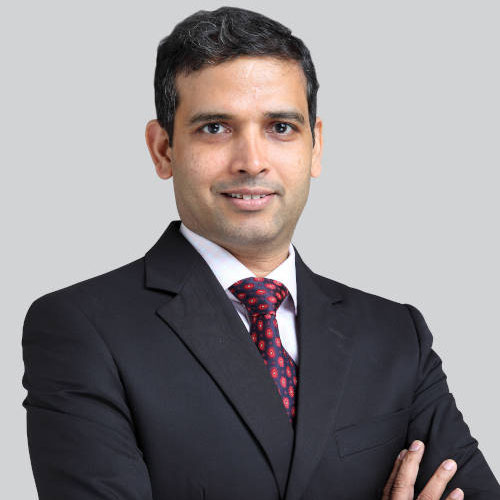
Parthasarathy: regulatory hurdle
Consolidation inevitable
The coming years could see more listing and a pick-up in M&A activity
There are at present 23 private companies operating in the life insurance sector, besides the Life Insurance Corporation of India. Over the last two decades, however, no major mergers and acquisitions have taken place. The only big one, between HDFC Life Insurance and Max Financial, did not go through. Recently, Axis Bank and its subsidiary, Axis Securities, took a minor 12 per cent stake in Max Financial Services, the company which houses Max Life Insurance.
Earlier, after the financial turbulence following the US sub-prime crisis, New York Life, a partner in Max, sold off its 26 per cent equity stake to Mitsui Sumitomo. “Across the industry, there is however concentration of market share, with the top 10 companies in the private sector commanding 80 per cent; in the pension field, the top three command an 80 per cent stake,” explains Niraj Shah, CFO. A CA and IIM Bangalore graduate, with over two decades of experience in the life insurance field across various companies, Shah feels: “One reason for the absence of big deals is that the promoters have managed to scale up and continue to fund future business requirements”. He points out that there are various factors to be considered in valuing an insurance firm. These include embedded value, quality of business, risk of disruption, cost of customer acquisition, investments in technology, cash flows, etc, along with growth.
The industry is still in a relatively nascent stage, with only a handful of listed companies. One which could see listing in the near future is Aditya Birla Sunlife, currently housed in Aditya Birla Capital. Tata AIG, promoted by Tata Sons and AIG, may also seek to list. LIC is, of course, the biggest to be listed and it is likely to gate-crash into the top five most valuable companies’ club in India.
-
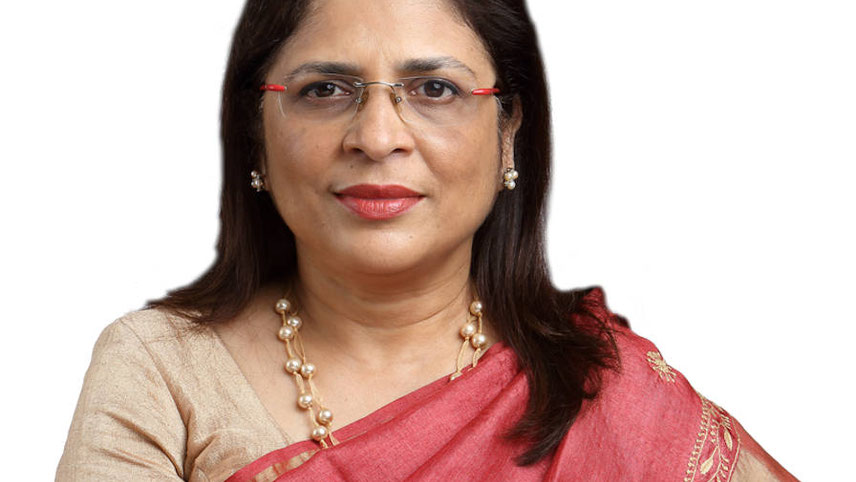
Padalkar: Today, HDFC Life’s growth in annuity is 40 per cent year-on-year, faster than others
‘Our aim: the most profitable organisation’
Vibha Padalkar shares her views on the journey through the company and the changes it has embraced, while talking to Daksesh Parikh
When do you expect to be the no: 1 insurer in the private sector?
We are an organisation focussed more on profit than top-line. Our aim is to be the most profitable organisation and walk out from underwriting policies, which only add to the top-line.
Everyone has embraced technology. What is your differentiator?
Technology can mean different things to different people. I will give you an example. We have something called, ‘pre-approved sum assured' wherein, for an existing customer, we will know who the customer is, what his DNA is and what his family is and, so, we are able to say you can get more of this. Everyone talks about it today but unless there is a deep integration with our core insurance system, it becomes misleading. Machine learning allows us to do a deep level of tech integration. Suppose in underwriting today, I am able to have a core underwriting engine, which is learning all the time on decisions and closely mimicking a human. About nine months ago, at the start of Covid-19, it learned the divergence between a BOT and a human being was very wide, in terms of gap. When the human was saying, it’s okay to issue a policy, the BOT was saying no, and vice-versa. About 10 days ago, my team presented a report to me which said that out of 16 million policies, only 2,900 were off.
Do you feel like you are missing out by not having an exclusive bank tie-up with say, HDFC Bank?
One can see it either way. Is the glass half empty or is the glass half full? Would I have loved to have an exclusive tie-up? Of course! We had an exclusive tie-up for many years and loosely are still part of the group. However, we cannot take any privileged relationship for granted. An open architecture system has taught us to be competitive and there is nothing to fear in embracing a new system. We have not only survived but also grown our market share.
Is insurance still largely investment driven…?
Indians have, for whatever reason, bought insurance largely through investment products. LIC was there for almost 55 years before the private sector was allowed in insurance. LIC perhaps did what was right at that time. The socio-economic stratum was not conducive to talk only about risk cover. Today, there is an awareness that, apart from unit linked ones, new categories too have been introduced. There are also interest rate-guaranteed products, annuity plans, where we have been at the forefront in product innovation and launches. Earlier, the industry was taken aback but now everybody is selling similar products. Some 13 years ago, annuity was 0.5 per cent of our business. Today, HDFC Life’s growth in annuity is 40 per cent year-on-year, faster than others.
What is the trend you are seeing in insurance today?
Younger people are buying more term products. They don’t see them as an expense the way it was perceived by people of earlier generation. Since the company can’t re-price, they feel it is better to buy before some lifestyle illnesses start creeping in – unlike older people, who still see it as an expense. Thinking of people across ages and geographies is different. Our country is an amalgamation of the population of Bharat and India. It is important to have a product to cater to each group.
Why is the persistency level lower in private sector, compared to LIC?
The client may not be contactable. For example, the insured person might either have moved or changed his e-mail ID. Some are structural. In case of ULIP, one can withdraw after five years. Loans on ULIP are not permitted, unlike in the case of traditional products. If loans were allowed, persistency would improve. The ULIPs, as structured today, have no exit barriers. Sometimes, there are genuine issues – when a person wants it for buying a house or to meet medical emergencies as in the Covid period. The third reason is the upfronting of commission. There are a lot of people who still sell multiple policies and also keep on advising customers to withdraw after five years and use it to pay the premium for the second. You cannot link ULIP and term. For financial savvy people, it is okay, but not for everyone. Investment cannot take precedence over risk.
Why is investment in equity very low in the private sector?
Actually, that’s how it looks optically, but frankly, that’s not how it works. In the case of participating products, if one is selling traditional products, which used to be sold largely by LIC, the government stipulates that 50 per cent has to go into government securities. That’s mandated by the regulation. Of the balance, up to 75 per cent goes to debt paper, with a majority of it in fixed debt. Only the balance 25 per cent can be in equity or VCN or on money market instruments.
In other non-participating products, which are interest guaranteed, we can’t put any equity backing those liabilities. We have to ensure a perfect ALM. We will have to invest in long dated fixed income paper. Today, in HDFC Life 60 per cent of our business or slightly more, maybe 70 per cent, of our business is all traditional. Only about 25 per cent of my business is unit-linked, which I can invest in equity, depending on the policy holder’s choice and mandate.























